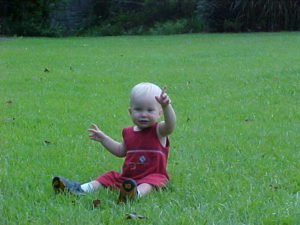Caring for Your Lawn
go.ncsu.edu/readext?761052
en Español / em Português
El inglés es el idioma de control de esta página. En la medida en que haya algún conflicto entre la traducción al inglés y la traducción, el inglés prevalece.
Al hacer clic en el enlace de traducción se activa un servicio de traducción gratuito para convertir la página al español. Al igual que con cualquier traducción por Internet, la conversión no es sensible al contexto y puede que no traduzca el texto en su significado original. NC State Extension no garantiza la exactitud del texto traducido. Por favor, tenga en cuenta que algunas aplicaciones y/o servicios pueden no funcionar como se espera cuando se traducen.
Português
Inglês é o idioma de controle desta página. Na medida que haja algum conflito entre o texto original em Inglês e a tradução, o Inglês prevalece.
Ao clicar no link de tradução, um serviço gratuito de tradução será ativado para converter a página para o Português. Como em qualquer tradução pela internet, a conversão não é sensivel ao contexto e pode não ocorrer a tradução para o significado orginal. O serviço de Extensão da Carolina do Norte (NC State Extension) não garante a exatidão do texto traduzido. Por favor, observe que algumas funções ou serviços podem não funcionar como esperado após a tradução.
English
English is the controlling language of this page. To the extent there is any conflict between the English text and the translation, English controls.
Clicking on the translation link activates a free translation service to convert the page to Spanish. As with any Internet translation, the conversion is not context-sensitive and may not translate the text to its original meaning. NC State Extension does not guarantee the accuracy of the translated text. Please note that some applications and/or services may not function as expected when translated.
Collapse ▲Cool season grasses such as fescue and Kentucky bluegrass should only be fertilized in February, September, and November. A good way to remember this is to fertilize on heart day, labor day, and turkey day. Applying fertilizer during warmer months can lead to disease and excess stress problems.
Always complete a soil test first. Excess nutrients can damage the waters of NC through run-off. Get a free soil test from N.C. Cooperative Extension – Henderson County Center located at 100 Jackson Park Rd, Hendersonville (in Jackson Park). Results will tell you how much phosphorus, potassium, and lime you need. Soil tests should be completed at least every 3 years.
Fertilizer facts – Fertilizer labels always display the three numbers in the same order (i.e. 10-6-4). These numbers represent the percent by weight of three important nutrients.
Nitrogen (N) – for leafy green growth
Phosphorus (P) – for root and bud growth
Potassium (K) – promotes disease tolerance and drought resistance.
A typical lawn feeding is 1 pound of nitrogen per 1,000 square feet. Here are some common lawn fertilizer formulations and the amount of each needed for 1 pound of nitrogen.
Bag Labeled Amount for 1lb. N
6-2-0 17 lbs.
10-10-10 10 lbs.
14-3-6 7 lbs.
35-3-5 3 lbs.
For other formulations, divide 1 (1 lb N per 1,000 sq. feet) by the first number on the bag (% N).
Ex. 24-6-6 1 ÷ .24 = 4.17
This is a little more than 4 pounds of product.
Lawn area is 5,000 square feet.
4 X 5 = 20 lb. bag to cover lawn.





